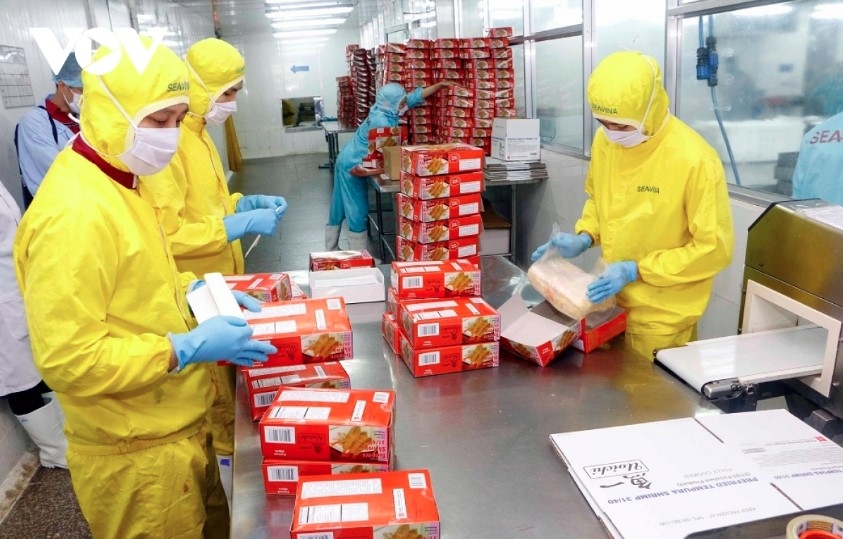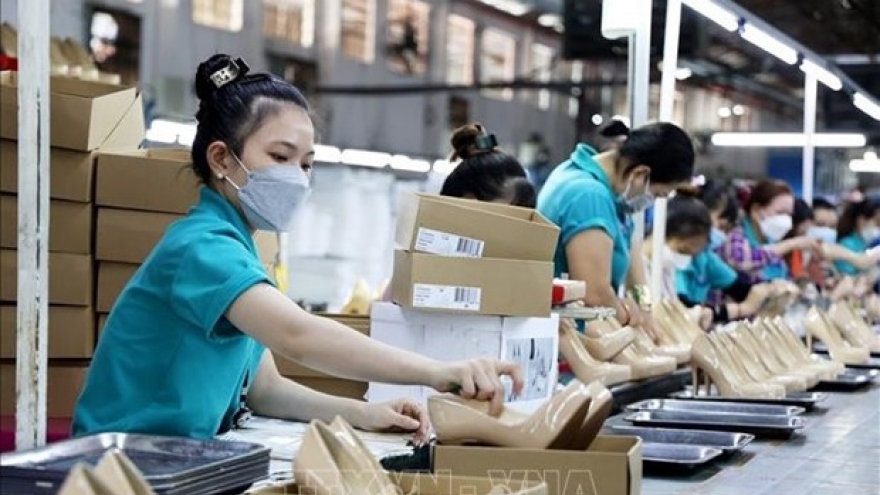Labor market in 2025 forecast to see intertwined opportunities and challenges
VOV.VN - Experts predict that after the Lunar New Year, the labor market will experience significant changes, presenting both opportunities and challenges for businesses and workers, making it a crucial time for both sides to grasp emerging trends and devise strategies to maximize growth potential.

Following the Lunar New Year, workers often seek new job opportunities or look to change their work environment. Meanwhile, businesses tend to increase hiring to fill gaps caused by resignations or job-switching at the end of the previous year.
The labor market is offering numerous options for job seekers, particularly those with specialized skills or relevant work experience. According to surveys from various human resource organizations, positions such as manual labor, sales staff, and technology technicians are in high demand. This demand is driven by companies expanding their operations and the ongoing digital transformation across industries.
In 2025, sectors related to technology, renewable energy, and logistics are expected to see continued strong growth, presenting significant opportunities for workers to secure stable, globally relevant jobs.
Vu Quang Thanh, Deputy Director of the Hanoi Employment Service Center, mentioned that late 2024 and early 2025 would be a dynamic period for recruitment in Hanoi. Companies in industries such as express delivery services, hospitality, and commerce-manufacturing were expected to have a high demand for labor to prepare for the Lunar New Year and the initial months of the new year.
The Ministry of Labor, Invalids, and Social Affairs has also expressed optimism, noting that the labor market is recovering quickly and showing progress. However, a labor shortage remains in key areas, especially at industrial zones and export processing areas. This shortage is due to some big companies taking on additional orders for the holidays without having sufficient workers available. The most significant shortage is in unskilled labor, particularly in garments and textiles and electronics assembly.
Numerous challenges for businesses and workers
Despite the opportunities, the labor market in 2025 will face several challenges. The biggest issue for businesses will be retaining workers after the Lunar New Year, as many employees are likely to resign or switch jobs. For workers, the major challenge will be competition for jobs due to limited information and skill gaps that prevent them from meeting the changing employment structure. Wage disparities across sectors and regions also make it difficult for workers to make proper decisions.
Another concern is that the shift in the economic structure and the rapid adoption of technology may lead to job losses, particularly for workers without qualifications. As companies increasingly turn to automation and artificial intelligence (AI), many workers may find that their skills are no longer in demand. This trend could reduce income and contribute to a shrinking labor force.
Competition for skilled workers will intensify as companies improve benefits and compensation to attract talent. To remain competitive, businesses will need to carry out more effective retention strategies.
Dr. Dinh Trong Thinh from the Academy of Finance affirmed that the labor market is showing positive trends, with many businesses actively recruiting and production expanding, especially in sectors that have traditionally been labor-intensive.
"Labor market developments are complex and will face several challenges. First, the streamlining of the State apparatus means that many government workers will need to find new employment. This will be a challenging process, particularly for older workers. This increase in labor supply could dampen demand. Additionally, difficulties in exports may lead some companies to reduce staff, which will also affect the labor market. We hope that by February or March, businesses will see improvements in their orders, which will help stabilize the supply and demand balance in the labor market. Balancing labor supply and demand will be a complex issue in 2025," Dr. Thịnh stated.
Dr. Thịnh also pointed out that the labor supply is significantly increasing, making the labor market more flexible and competitive. If production continues to expand, there will be an abundant workforce to support the market and stimulate growth. However, if economic activity slows down, this increase in labor supply could hinder the market balance and create more competition for available jobs.
Nguyen Thanh Mai, Deputy Head of the Population and Labor Statistics Department (General Statistics Office), noted that while the labor market is recovering, the quality of the workforce still faces many challenges. It does not meet the needs of a modern, flexible, sustainable, and integrated labor market. Currently, 71.4% of workers in the country have no formal training or certifications.
While the number of employed workers is rising, the labor market remains unstable, as informal workers in precarious, low-paid jobs continue to make up a substantial portion of the workforce, over 60% of all employed workers.
Experts argue that with the rapid development of technology and the growing trend of digital transformation, the labor market will undergo major changes in work methods, recruitment needs, and skill requirements. Therefore, workers must enhance their skills and knowledge to keep up with these shifts. At the same time, businesses should focus on creating an attractive working environments to retain talent and boost sustainable growth.


